
Nothing more than a combination of spices, sugar and salt, rubs can add intense or subtle flavors to meat, fish and vegetables. Like marinades, they are meant to be put on the raw meat before you cook it. Unlike marinades, they're almost mess-free and you can easily control the flavor intensity.
Getting Started
You should apply the rub before you cook the food. This treatment allows the rub to permeate the food, adding flavor and, in some cases, texture in the form of a crisp crust. Once you've applied the rub, cover the food loosely with plastic wrap and refrigerate it for at least 30 minutes, or up to six hours, depending on the food. Apply a rub to fish or vegetables right before cooking. Season chicken an hour or two before you cook it. Larger cuts of meat can be refrigerated several hours.
The Technique
How you apply the rub depends on the food you're seasoning. Spoon or sprinkle rubs over beef, chicken and pork and use your fingers to massage the seasonings into the meat. Slather a bit of oil on lean cuts before you add the rub. Fish is too delicate for this aggressive treatment. Instead, spread a bit of oil on the fish and shake a fine layer of seasonings over it. Rubs are typically reserved for meat, but they make vegetables taste delicious, too. Coat the vegetables lightly in oil. Then place the vegetables in a plastic bag with a rub and shake to coat.
Mixing a Rub
Although the technique for using a rub is almost always the same -- apply the rub before cooking -- rubs themselves come in many variations. Start with a bit of sugar or salt and add various flavors. Chilies and paprika provide heat and smokiness. Thyme, rosemary or lavender add an herbal flavor. Citrus zest brings a bright spark of freshness. When making a rub, consider the character of the meat you're using. Beef and fish need a rub that's on the salty side, while poultry and pork benefit from a bit of brown sugar in the rub. Too much sugar can cause the meat to caramelize and burn. For lean meats, you can make a wet rub from oil and a concentration of spices or inject the meat with a salt or sugar solution.
Rub Saftey
When using a rub, keep all surfaces and equipment clean and keep raw foods separate from cooked foods. Wash your hands with warm, soapy water immediately after massaging the rub into the meat so you don't transfer bacteria to kitchen surfaces or other foods. As you massage the rub into the food, some of it will inevitably fall off the food. Don't reuse this leftover rub. Don't use a rub directly out of a container, but pour what you need into a bowl to prevent contamination. Discard any rub that may have come in contact with raw food.
Related Articles

How Can I Tone Down a Dry Rub That Is ...
Can I Cook Dry Rub Pork in a Slow ...
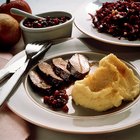
How to Make a Venison Rub
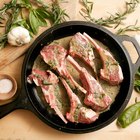
Ways to Cook Lamb Chops

How to Cook With Saran Wrap

The Difference Between Grilled and ...

Can You Cook Something Frozen in the ...

How to Make Teriyaki Sauce

Seasoning for Pre-Made Burgers

How to Remove Paint Stain From a Polar ...

How to Use an Indoor Electric Grill

How to Tenderize Your Meat With a Kiwi ...
Easy Cooking for Pork Spareribs
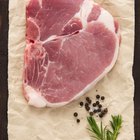
How to Cook Barbecue Boneless Pork Loin
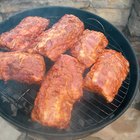
How to Smoke Ribs With a Gas Smoker

How to Grill a Whole Beef Fillet

Spices Used for Cooking Pork Chops

Grilling Instructions for Rib-Eye Steak
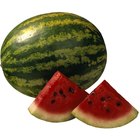
How Long Can You Keep a Cut Watermelon?
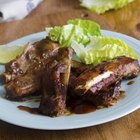
How to Marinate & Dry Rub Beef Ribs
References
Writer Bio
Julie Christensen is a food writer, caterer, and mom-chef. She's the creator of MarmaladeMom.org, dedicated to family fun and delicious food, and released a book titled "More Than Pot Roast: Fast, Fresh Slow Cooker Recipes."
Photo Credits
Creatas Images/Creatas/Getty Images